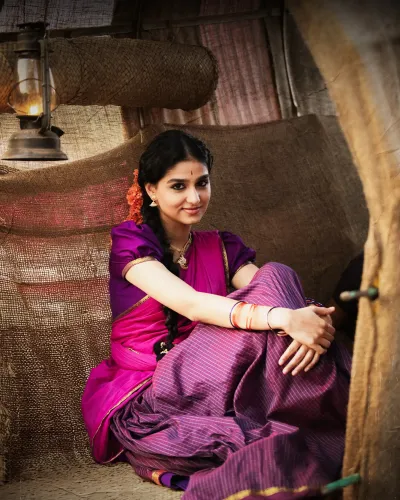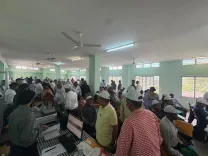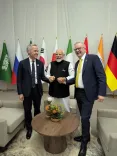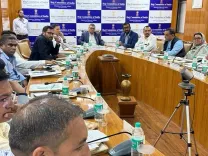Is India Sprinting Ahead While Pakistan Struggles to Stay in the Race?

Synopsis
Key Takeaways
- India's economy is projected to surpass Germany by 2028.
- Pakistan relies heavily on foreign aid and IMF bailouts.
- India's military capabilities far exceed those of Pakistan.
- Political instability hampers Pakistan's democratic processes.
- Women's rights and cultural influence differ significantly between the two nations.
Islamabad, Aug 15 (NationPress) In August 1947, two nations - India and Pakistan - emerged almost as twins, divided by an arbitrary border, sharing a colonial history while stepping into the modern era with compromised economies and fractured societies. After 70 years, India has propelled itself into the top tier of the world’s most influential economies and democracies, while Pakistan has struggled, weighed down by political turmoil, an economic crisis, and the unyielding presence of its military establishment, according to a report released on Friday.
Upon gaining independence, both countries inherited economies that were in disarray. Nonetheless, by June 2025, India is projected to become the world's fourth-largest economy—over ten times larger than Pakistan’s USD 0.37 trillion—and is on track to surpass Germany by 2028.
In stark contrast, Pakistan's economy has faced continuous crises, heavily reliant on foreign aid and recurrent IMF bailouts—the 2024 program marking its 24th bailout—struggling with soaring debt, dwindling reserves, and sluggish industrial output. India's foreign exchange reserves now exceed USD 688 billion, while Pakistan's barely reach USD 15 billion. The disparity in per capita income, when adjusted for purchasing power, further emphasizes the divide: India’s income is nearly double that of Pakistan's,” stated the Khalsa Vox report.
The report also highlights that the disparity between the two nations extends beyond mere statistics; it reflects a difference in self-confidence. India positions itself as a global growth engine, whereas Pakistan risks being characterized by its reliance on external support.
The rivalry between India and Pakistan has led to four wars, numerous skirmishes, and a near-constant state of military readiness. As of 2025, Global Firepower ranks India as the fourth strongest military globally, while Pakistan is positioned at 12th.
“India boasts 1.46 million active personnel, more than double Pakistan’s 654,000, supported by 1.15 million reserves and 2.5 million paramilitary units. Its military assets include 4,201 tanks and over 148,000 armored vehicles, compared to Pakistan’s significantly smaller fleet,” the report elaborates.
Additionally, India maintains an advantage in aerial capabilities, with 2,229 aircraft—including Rafales, Su-30MKIs, and indigenous Tejas fighters—against Pakistan’s 1,399. India operates six aerial refueling tankers while Pakistan has four. Both nations are nuclear-capable, with India possessing 180 warheads compared to Pakistan’s 170. However, India's declared “No First Use” policy contrasts with Pakistan’s more ambiguous nuclear stance.
When it comes to military spending, India allocated USD 86 billion for defense in 2024, while Pakistan spent USD 10.2 billion. “For India, the military is a component of a broader vision of national power. For Pakistan, it has frequently been the dominant—yet restrictive—force in politics.”
India conducted its first general elections in 1951-52, while Pakistan held its inaugural poll in 1970. India has sustained its democratic framework, with 945 million eligible voters in the 2024 Lok Sabha elections—marking the largest democratic exercise in history.
In contrast, Pakistan's democratic journey has been marred by military coups in 1958, 1977, and 1999, interrupting civilian governance. Even in peaceful times, the military and its influential intelligence service exert substantial control over national policy. Recent rumors have surfaced regarding another potential coup. Furthermore, Pakistan's Army Chief Asim Munir has elevated himself to Field Marshal. The report notes: “The distinction is not solely institutional. India’s political culture, despite its partisanship, has fostered a stable transition of power through elections. Pakistan’s political environment has repeatedly undergone resets through force.”
India's advancement also surpasses Pakistan in terms of women's rights. According to the World Economic Forum's 2024 Gender Gap Report, India ranks 131st, while Pakistan is at 148th. In 2024, Pakistan reported over 24,000 cases of abduction and kidnapping, over 5,000 rapes, and 500 honor killings—with conviction rates below two percent, the report indicates.
India also excels over Pakistan in cultural and sporting domains. In 2025, India’s ODI cricket team was ranked first, whereas Pakistan was in fifth place. Beyond cricket, India has consistently risen in other sports, having won 41 Olympic medals since 1900, in stark contrast to Pakistan's 11. “Culturally, India has effectively utilized its soft power—from Bollywood to its extensive diaspora—to extend its influence well beyond its borders. Pakistan’s cultural contributions, while rich, are often hindered by political instability and limited global networks,” the Khalsa Vox report stated.
India has been positioning itself as a key player in the evolving multipolar global landscape, strengthening relationships with the US, Europe, and East Asia while seeking investments from the Gulf. In contrast, Pakistan risks marginalization due to its dependence on IMF tranches and political support from China and Saudi Arabia.
The report concludes: “Independence is not a static accomplishment but an ongoing endeavor. For Pakistan, the urgency is palpable: to restore economic stability, reaffirm civilian governance, and reignite the aspirations of 1947. Seventy-eight years ago, both nations began their journey from the same starting point. Today, one is sprinting ahead while the other struggles to remain in the race.”









